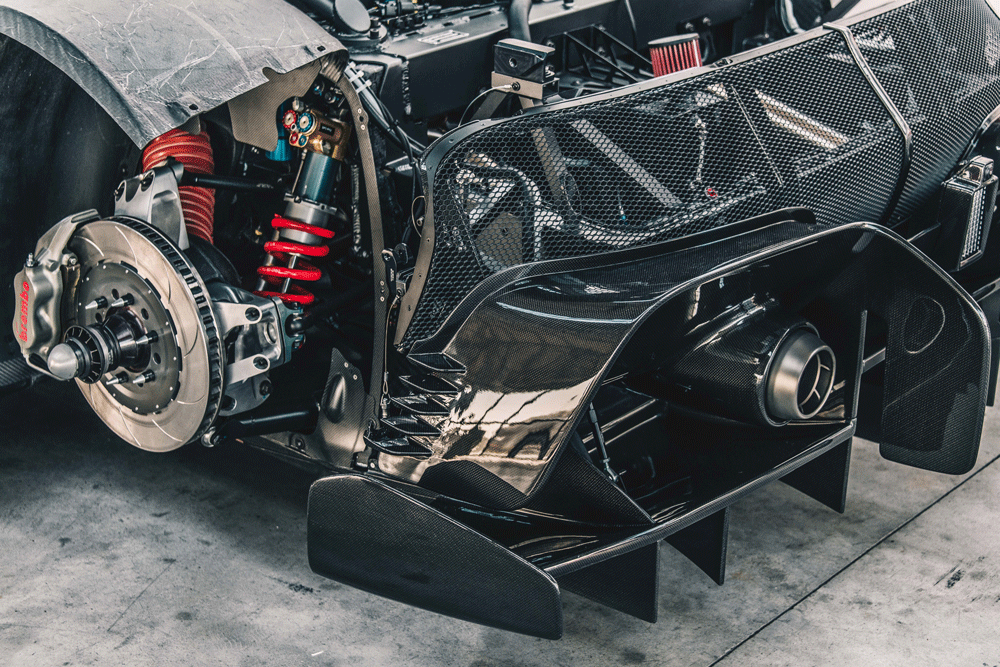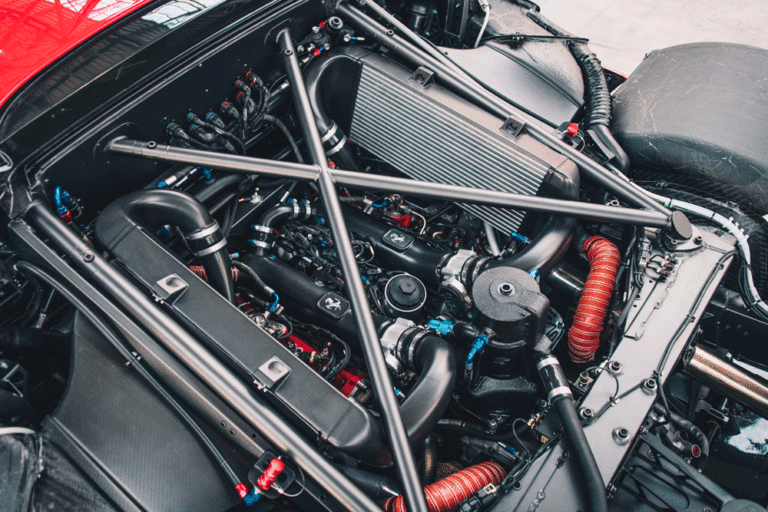Italian OEM Ferrari has detailed the development process needed to tailor the P80/C around its famous 3.9-liter powerplant. The one-off vehicle took four years to come together and has been equipped with the 669ps twin-turbo V8 engine that forms the heart of the 488 GT3.
Kicked off in 2015, the P80/C project had the longest development time of any Ferrari one-off made to date. This intense gestation period was the result of in-depth styling research and lengthy engineering development, with meticulous analysis of performance parameters as well as scrupulous aerodynamic testing.
The P80/C is a track car, which means that performance is a major factor so this not only pointed the design team in the direction of a design that was absolutely unique, but also forced them to make radical changes to the running gear of the donor 488 GT3. This involved introducing specific features required to guarantee the marriage of style, technical prowess and aerodynamics.
The decision was made to use the 488 GT3 chassis as a basis not only for its performance but also for its longer wheelbase (50mm longer than the GTB) which allowed more creative freedom.
Seen from above, it is clear that the bodywork is widest over the front axle but then narrows sharply, creating a tightly sculpted waistline around the rear door before broadening out again at the tail. This architecture is also emphasized by flying buttress-type C-pillars which are physically detached from the cabin. The C-pillars wrap around the intercooler air intakes, while accentuating the drop in height between the roof and the surfaces of the rear engine cover.
Aerodynamic development was based on the experience gained with the 488 GT3, but was not governed by the restrictions imposed by international regulations. Thus, the front splitter is specific and, while the expansion curve and vortex generators of the rear diffuser are the same as those used on the GT3, the external surfaces are all unique to the P80/C. The result is an improvement of around 5% in overall efficiency, required to make full use of the unrestricted engine.
The large radiator air vents are located just behind the wing-like nose structure and these outlets over the front hood underline the powerfully muscular wings. Even the rear fascia, which leaves the running gear fully visible, has a catamaran-type architecture. This enabled the inside to be completely devoid of bodywork. In fact, its sole occupant is a grille to help evacuate heat from the engine bay.




